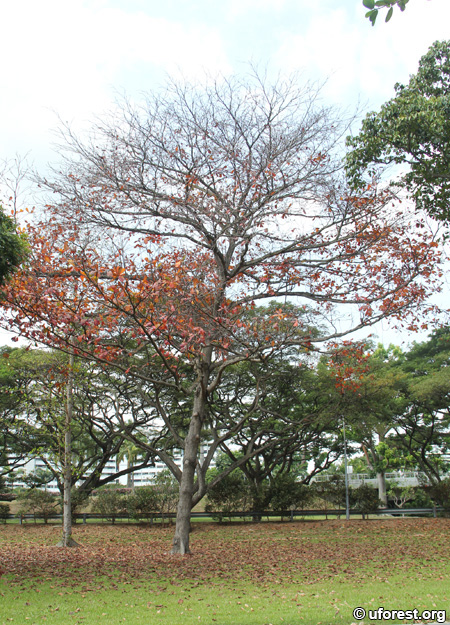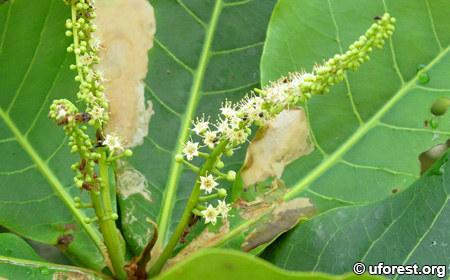| Etymology | Genus | From Latin terminus; referring to the leaves at the end of the shoots |
|---|---|---|
| Species | From the Malayan name for the Indian Almond | |
| Family | Combretaceae | |
| Synonyms | - | |
| Common Names | Sea Almond, Indian Almond, Ketapang | |
| Status | Native: Common | |
| Form | Tree | |
| Native Distribution | Madagascar, China, India, Indochina, Malesia, Australia, Pacific Islands | |
Diagnostics:
Terminalia catappa is a common sea-shore tree up to 25m. It is most obvious from its spreading branches extending from the trunk, creating a layered or pagoda appearance. The large leaves are obovate, and arranged in a rosettes. The fruits are buoyant due to the corky rind and air cavities in the outer part of the stone (Corner, 1997).
Interesting Facts:
Twice a year, the leaves will all turn red and will be shedded off from the tree, in Jan or Feb, and Jul or Aug (Corner, 1997). The leaves are said to have anti-bacteria effects, as they release tannic and humic acid; therefore being placed in aquariums to "promote the fish health and provide a calming effect" (Tan, 2016).

A lone tree in Lazarus Island, showing its layered pagoda structure.

Leaves turning red and falling.

Inflorescence.

Fruits.
References
Corner EJH. (1997) Wayside Trees of Malaya. Volume 1. 4th edition. The Malaysian Nature Society, Kuala Lumpur. 476 pp.
Tan R (2016) Sea Almond Terminalia catappa. http://www.wildsingapore.com/wildfacts/. Accessed on 9-Dec-2018.
Author: Siyang
Posted: 2018-12-14